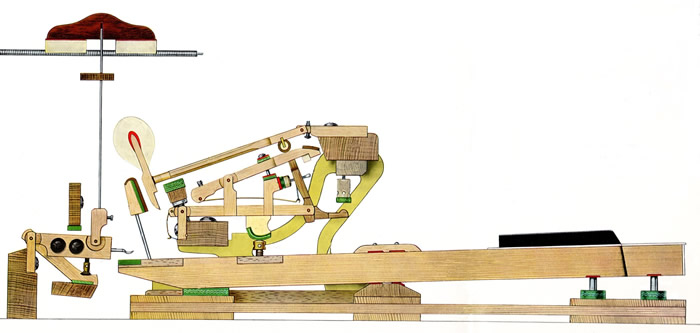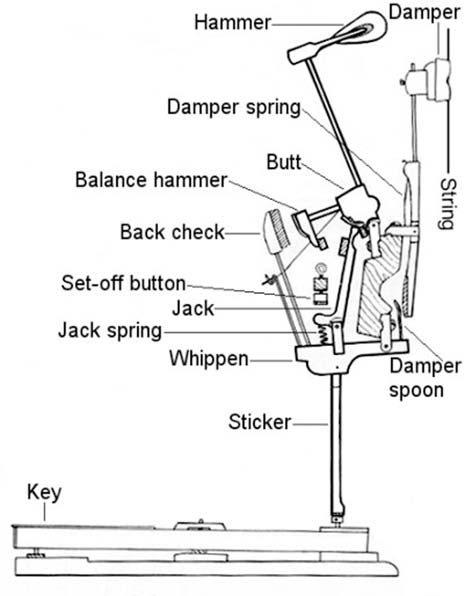Regulation is the adjustment of all the mechanical, moving parts of the piano to exact specifications.
The result of good regulation is a smooth, even feel when playing. The well regulated piano offers the greatest dynamic range of which it is capable, and gives the pianist a feeling of fine control in her/his playing.
The piano is a rather complex piece of machinery. You might think, “How hard could this be? You push down on the key and the hammer hits the string!” It is much more complicated than you might think. Look at the diagrams, and then keep reading, below.

Grand action drawing

Upright action diagram
There are about 35 pieces assembled with glue, flanges, brass pins and screws for each note that is played on the piano. In order for the note to play, these pieces have to move at exactly the right moment, for exactly the right distance, and stop at exactly the right time. If all of these things do not happen properly, either the hammer will not hit the string at all, or it will “bobble” (hit repeatedly) against the string, or it will block against the string preventing any sound.
Making all these adjustments 88 times (once for each note on the piano) is called regulating the piano. The sequence of the movements and the distance between the parts must be very precise. The result of a good regulation is that the pianist has a sense that the playing is “even” – that it takes the same amount of pressure to play each note, and the volume produced is the same relative to the amount of force applied.
Different piano manufacturers perform different qualities of regulation on their new pianos before they are delivered. Some pianos are woefully out of regulation when they arrive in the home. All pianos will gradually go out of regulation as they are played year after year as the felt parts compress and become worn.
Symptoms of a piano being badly out of regulation are: keys are not level, lack of forceful sound even when a key is struck hard, uneven volume or feel, “bobbling” hammers, keys seem to “sink” too far down when played. No two pianos will feel exactly the same when played, but ideally all the notes on one piano should feel the same.
We will be happy to assess your piano and give you a written estimate of the cost of regulation and/or repairs.